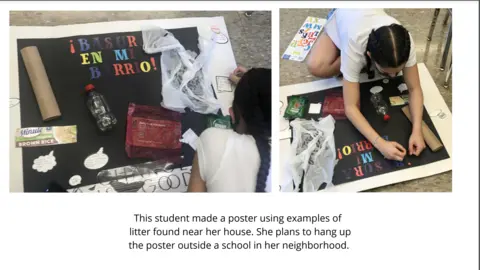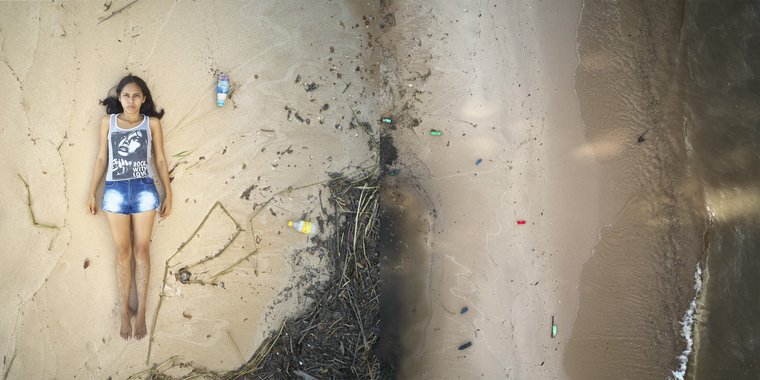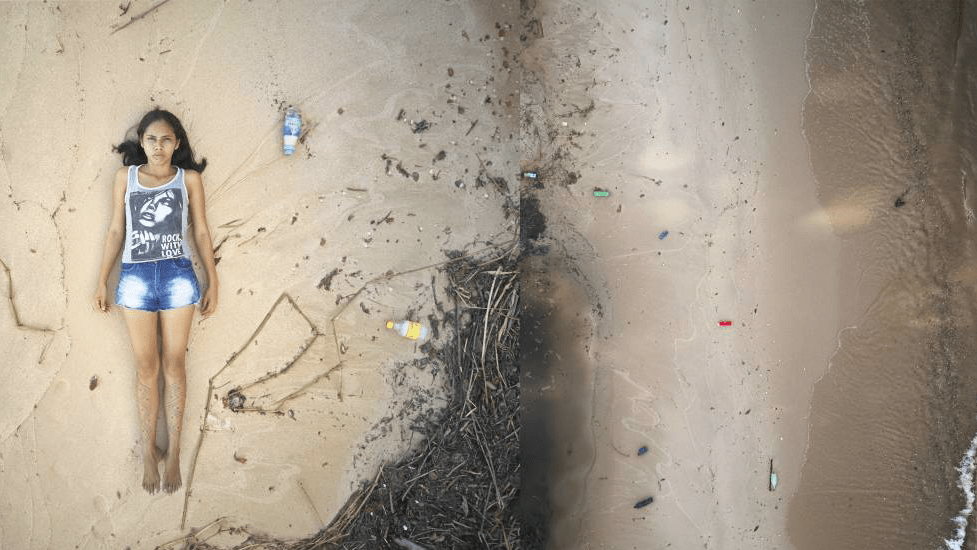This unit was created by Cara Bucciarelli, an elementary Spanish teacher in Chicago, IL, as part of the spring 2021 Pulitzer Center Teacher Fellowship program on Journalism and Justice. It is designed for facilitation across approximately eight 45-minute live or virtual class periods.
For more units created by Pulitzer Center Teacher Fellows in this cohort, click here.
Unit Objectives
- Students will be able to define the following terms:
- Una noticia poco denunciada / Underreported story
- La justicia ambiental / Environmental justice
- El racismo ambiental / Environmental racism
- El activismo / Activism
- Students will identify the topic and some details of informational texts and videos.
- Students will identify and identify with character traits that relate to being an activist or taking a civic action.
- Students will investigate global and local environmental issues through articles, videos, infographics and class discussions.
- Students will create a bilingual infographic or call-to-action about an environmental justice issue in Chica
Unit Overview
Who makes decisions about the environment? How do decisions about environmental issues affect a community’s health? Who is an activist? How do individuals inform and/or advocate for their communities?
Students will first investigate the global problem of plastics pollution. Through an exploration of maps and data, including from the Pulitzer Center Resource Plastic that Travels 8,000 Miles: The Global Crisis in Recycling, students will gain knowledge of issues pertaining to plastics, both on land and in our oceans. They will utilize the Pulitzer Center resource Joane: We Can End the Toxic Use and Burning of Plastics as one example of a clear community action taken by young people to help bring about awareness and change in their community. Through reading the article and watching the related video, students will identify character traits of Joane, the featured activist, as well as discuss the process of engaging in a civic action.
Next, students will examine environmental issues in communities across Chicago, engaging with locally-relevant themes such as the effects of lead in water and soil, microplastics, and air pollution. They will define the terms environmental justice and environmental racism and discuss how those ideas relate to issues locally and globally. During this part of the unit, students will continue to identify traits that exemplify activism in the leaders highlighted in the articles, as well as determine what traits they may share with activists.
Finally, students will create an infographic or other call-to-action highlighting an environmental issue of their choosing.
Performance Task
Based on the topics introduced through the unit, students will design an infographic or call-to-action about an environmental issue of their choosing. Students will choose from a list of potential options, including designing a poster or infographic, creating a video, writing a poem or letter, or designing artwork that includes language.
Unit Plan
Four lesson unit plan, including warm-ups, texts and video resources, discussion questions, activities, and performance tasks for the unit.
Action Project Performance Task
Based on the topics introduced through the unit, students will design an infographic or call-to-action about an environmental issue of their choosing. Students will choose from a list of potential options, including designing a poster or infographic, creating a video, writing a poem or letter, or designing artwork that includes language.
During their reflection, they will select character traits discussed during the unit that they feel they share with other activists and think about the ways in which they can push for change in their communities. The performance task is evaluated with a summative assessment rubric.

Student Work Packet
Review the collection of student work from Ms. Bucciarelli’s students which includes bilingual posters, photographs capturing environment-oriented civic action, and post-survey data.
ACTFL Connections:
Connect with other disciplines and acquire information and diverse perspectives in order to use the language to function in academic and career-related situations
Learners use the language both within and beyond the classroom to interact and collaborate in their community and the globalized world.
Performance Descriptors for Language Learning:
Novice High:
- Interpretive: I can identify the topic and some isolated facts from simple sentences in informational texts.
- Presentational: I can express my preferences on familiar and everyday topics of interest, using simple sentences most of the time.
Intermediate Low:
- Interpretive: I can identify the topic and related information from simple sentences in short informational texts.
- Presentational: I can express my preferences on familiar and everyday topics of interest and explain why I feel that way, using simple sentences















